Tradescantia Pallida: Ultimate Growing and Care Guide
Tradescantia pallida, also known as purple heart or purple queen, is an eye-catching houseplant. This trailing plant is native to northeastern Mexico and has been a popular houseplant since the mid-1970s.
If you’re looking to add a pop of color to your home or garden, Tradescantia pallida is a great option. The rich purple leaves look fantastic as an accent plant or featured in pots and hanging baskets. And while it thrives outdoors in tropical climates, it also grows well indoors with minimal care.
Tradescantia pallida is one of around 60 to 70 species in the Tradescantia genus, which are commonly known as spiderworts. It’s a member of the Commelinaceae family along with other popular houseplants like zebrina pendula and callisia repens.
While new to many modern indoor gardeners, Tradescantia species have a long history. Some were originally described back in 1753 by Carl Linnaeus, the father of modern taxonomy. And Tradescantias are named after John Tradescant, a 17th century botanist and gardener who travelled to collect new plant specimens.
If you’re looking for an easy-care houseplant with year-round visual interest, Tradescantia pallida is a great choice. This guide will cover everything you need to know about growing and caring for purple heart plants.
We’ll discuss topics like:
- Tradescantia pallida’s ideal growing conditions indoors and outdoors.
- Step-by-step instructions for propagation and cultivation.
- How to provide proper soil, sun, water, and fertilizer.
- Diagnosing and treating potential pests or diseases.
- Creative tips for displaying purple heart plants in your home and garden.
Whether you’re a beginner or experienced gardener, this comprehensive guide will help ensure your Tradescantia pallida thrives. Let’s get started!
II. Botanical Information
Tradescantia pallida goes by many names. Understanding its scientific classification and common monikers can help avoid confusion.
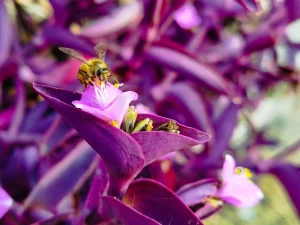
A. Taxonomy and Classification
Tradescantia pallida has the following scientific hierarchical classification:
Kingdom: Plantae Division: Tracheophyta Class: Magnoliopsida Order: Commelinales Family: Commelinaceae Genus: Tradescantia Species: pallida
It was originally named Setcreasea pallida by Joseph Nelson Rose in 1911. But in 1975, D.R. Hunt of the Royal Botanic Gardens Kew reclassified it under the Tradescantia genus.
So while you may still see it referred to as Setcreasea pallida or Setcreasea purpurea, Tradescantia pallida is the scientifically accepted name today.
B. Common Names
Tradescantia pallida also goes by many common names, including:
- Purple heart
- Purple queen
- Purple secretia
- Purple-heart wandering Jew
- Moses in a basket
The most prevalent names are purple heart and purple queen. Sometimes “purple secretia” is used to differentiate it from other purple-leafed Tradescantia species.
And while it’s less common, “Moses in a basket” is a biblical reference to the way the plant’s trailing stems hang over pots.
C. Description of Tradescantia Pallida
Tradescantia pallida is known for its striking purple foliage. Here are some key features that identify this species:
- Leaves: Dark purple, lance-shaped leaves up to 7 inches long. The undersides are light purple to magenta. The leaves are succulent and covered in fine hairs.
- Stems: Trailing, weakly upright stems that can reach 12 inches long. The stems are segmented and break off easily. They are the same purple color as the leaves.
- Flowers: Small, pink to purple flowers that bloom sporadically from mid-summer to fall. The 1/2 inch wide flowers have three petals and yellow stamens.
- Growth Habit: A low, spreading plant that trails gracefully. It can spread up to 3 feet wide as ground cover.
- Hardiness: USDA zones 9-11 as a perennial. Grown as an annual in cooler climates.
- Native Range: Northeastern Mexico from Tamaulipas to Yucatan.
So in summary, Tradescantia pallida is characterized by its vivid purple foliage and trailing, vining growth habit. The small pinkish-purple flowers provide an added pop of color.
It’s easy to see why Tradescantia pallida is such a popular houseplant! Now let’s look at how to cultivate and propagate this gorgeous species.
III. Growing Tradescantia Pallida
Now that you’re familiar with purple heart’s background and features, let’s get into the details of how to grow this amazing houseplant. We’ll look at propagation, cultivation from seeds, lighting needs, and ideal soil and watering.
A. Propagation Methods
Tradescantia pallida is one of the easiest houseplants to propagate. You have a few different options:
Stem cuttings:
- Take 3-6 inch stem cuttings below a leaf node.
- Remove lower leaves and place the cut end in water or soil.
- New roots will sprout at the nodes in a few weeks.
This is the quickest and most common way to propagate new purple heart plants.
Leaf cuttings:
- Choose a healthy leaf and gently twist it off the stem.
- Lay the leaf flat on moist soil or sand.
- New plantlets will begin growing where the leaf veins meet.
Plant division:
- Carefully divide the purple heart’s root ball and root system into smaller sections.
- Replant each section individually in its own pot.
Seed cultivation (rarely done):
- Collect seeds from spent flowers once they fade.
- Sow seeds in sterile seed starting mix.
- Maintain warm temperature and even moisture.
Stem and leaf cuttings are the simplest propagation methods. But plant division helps rejuvenate overgrown plants and seed cultivation ensures genetic diversity.
B. Germination and Cultivation from Seed
Growing purple heart from seed is challenging since seeds are rarely available commercially. But here are some tips if you do get your hands on some:
- Check if seeds are fresh – viability declines over time.
- Sow seeds in sterile, well-draining seed starting mix.
- Cover seeds lightly with 1/4 inch of mix; don’t bury deeply.
- Keep mix evenly moist, not soaked.
- Germination takes 14-30 days at 65-75°F.
Tradescantia pallida seeds need warm soil, moisture, and light to germinate. Start seeds 8-10 weeks before your last expected frost date.
Once sprouted, gradually acclimate young plants to normal indoor or outdoor growing conditions. Pinch off any flowers the first year to promote strong roots and foliage growth.
C. Light and Sunlight Requirements
As a tropical plant, Tradescantia pallida thrives in bright light:
- Indoors: Provide at least 6 hours of direct sun daily. East or west-facing windows are ideal. Rotate plants periodically to prevent lopsided growth toward the light. Supplement with grow lights in darker rooms.
- Outdoors: Plant in full sun. In hot climates, provide afternoon shade to prevent leaf scorching.
With insufficient light, leaves lose vibrant purple pigment and turn dull green. Maximize sunlight exposure to encourage deepest color.
D. Soil and Watering Needs
Tradescantia pallida isn’t too picky about soil but does best in:
- Well-draining, loamy mix with compost or peat moss
- Neutral pH around 6.5-7.5
- Keep consistently moist but not waterlogged
Good drainage is key – use containers with holes and amend dense soil. Allow the top inch to dry between waterings. Wilting leaves or soil pulling away from pot edges indicates under-watering.
Yellow lower leaves and soft, mushy stems are signs of overwatering. Adjust frequency based on your environment.
Provide the right mix of sunlight, soil, and water to keep your Tradescantia pallida thriving with vibrant purple foliage. Next, we’ll go over some tips for maintenance and care.
IV. Caring for Tradescantia Pallida
Now that you have your Tradescantia pallida happily growing, let’s look at some tips to care and keep it healthy and vibrant. Proper maintenance like pruning, fertilizing, and pest management will help it thrive indoors and out.
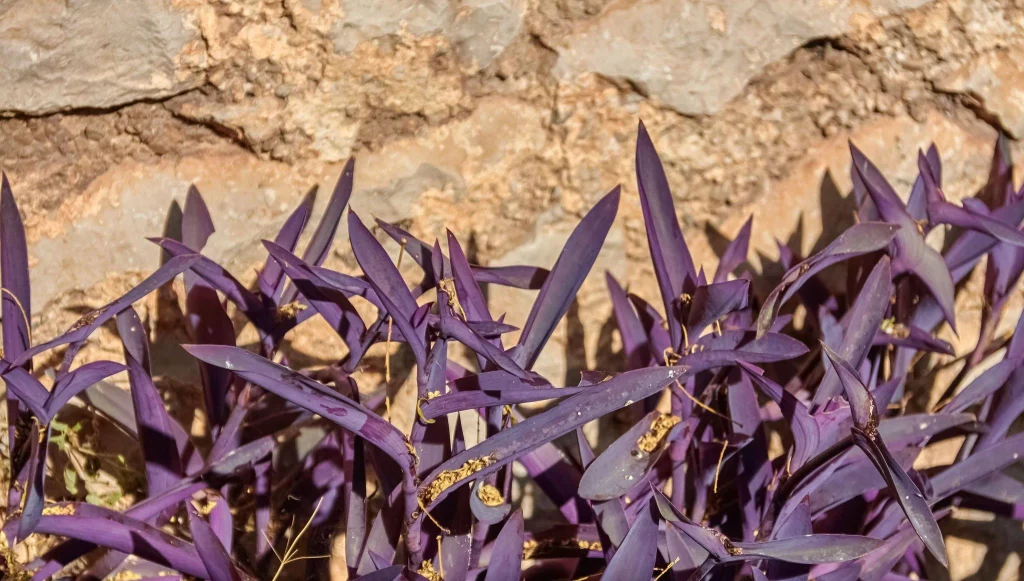
A. Pruning and Maintenance
Pruning is beneficial for maintaining your purple heart’s shape and size:
- Pinching – Use your fingers to pinch off stem tips. This encourages bushier, compact growth.
- Deadheading – Clip off spent flowers to improve appearance.
- Cutting back – Annually cut back long, leggy stems to several inches above the soil. This stimulates new growth.
- Shaping – Snip stems as needed to contain spread or create fuller plants.
Take cuttings from trimmings to propagate more purple heart plants. Disinfect pruners before each use to avoid spreading disease.
B. Fertilization
In soil, purple heart typically doesn’t need much supplemental fertilizer. But for container plants:
- Use a balanced liquid fertilizer diluted to half strength.
- Fertilize monthly during the active growing season (spring through summer).
- Reduce feeding in fall and winter when growth slows.
Excess fertilizer can burn roots and leaves. Rinse any spills off foliage to prevent damage.
C. Pests and Diseases
Fortunately, Tradescantia pallida suffers few serious pest or disease issues. Potential problems include:
- Mealybugs – Cottony insects that cause yellow, stunted leaves. Wipe off with alcohol or insecticidal soap.
- Aphids – Green or black soft-bodied insects that cluster on leaves and stems. Remove manually or use neem oil.
- Scale insects – Flat, rounded insects that cling to stems and leave sticky residue. Use horticultural oil or alcohol solution.
- Root rot – Caused by overwatering. Improve drainage and avoid excessive moisture.
- Leaf spots – Small spots on foliage due to bacteria or fungi. Remove affected leaves and increase sunlight and air circulation.
Check plants regularly for early signs of pests like insects or sticky deposits. Act quickly before infestations take hold. Proper care will keep your purple heart healthy and prevent most disease issues.
D. Cold Protection
Tradescantia pallida thrives outdoors year-round in frost-free climates (Zones 10-11). In colder areas, it should be grown as an annual or brought indoors before first frost:
- Move potted purple hearts indoors once nighttime temperatures reach 50-55°F.
- Cut back any remaining outdoor plants to 2-3″ above soil level after frost blackens the foliage.
- Mulch the soil surface for insulation or cover with a cold frame or fabric row cover.
- Water minimally over winter. Do not fertilize dormant plants.
- New growth will return in spring after all danger of frost is past.
With some basic care, your Tradescantia pallida will thrive indoors as a perennial houseplant until its time to go back outside next season.
Proper maintenance like pruning, pest management, and winter protection will keep your purple heart plants flourishing. Next, let’s go over some helpful growing tips and tricks.
Tradescantia Pallida Container Gardening and Indoor Care
The trailing growth habit of Tradescantia pallida makes it a perfect plant for containers. Here are some tips for growing purple heart plants in pots as houseplants or outdoors.
Choosing containers:
- Select containers with drainage holes to prevent root rot.
- Shallow, wider pots highlight the draping stems.
- Use decorative cachepots with drainage trays or liner pots.
- Make sure pots are large enough – at least 6-8 inches deep and wide.
Potting mix:
- Use a well-draining, commercial potting soil.
- You can amend regular potting mix with perlite or bark to improve drainage.
- Re-pot every 2-3 years in fresh soil to provide new nutrients.
Watering and feeding:
- Check soil moisture frequently, watering when the top inch is dry.
- Be cautious not to overwater, which causes decline.
- Feed monthly with a balanced liquid fertilizer during spring through fall.
Getting the right light:
- Place pots in east or west windows to get at least 6 hours of direct sun daily.
- Turn plants periodically so all sides get evenly illuminated.
- Supplement with grow lights if sunlight is inadequate.
Propagating and rejuvenating:
- Take 3-6 inch stem cuttings in spring or summer for new plants.
- Prune back and divide rootbound plants to renew growth.
Caring indoors:
- Move outdoor containers inside well before first frost.
- Cut back on water and stop fertilizing during winter rest period.
- Resume normal care when new growth appears in spring.
Follow these tips to successfully grow Tradescantia pallida in containers as an indoor plant or outdoor accent. The purple shades shine best when given bright light and a fast-draining potting mix.
VI. Conclusion
With its vivid purple foliage and vining growth habit, it’s easy to see why Tradescantia pallida has become such a popular houseplant. This trailing purple heart is a great option for beginners looking to add a pop of color, texture, and visual interest to indoor spaces.
Hopefully this guide has provided you with all the information you need to successfully grow and care for Tradescantia pallida. From propagation techniques to design ideas, you should feel confident adding these striking purple beauties to your home.
The key things to remember are providing the light, water, soil, and care purple heart plants need to thrive. Well-draining soil, bright indirect light, warm temperatures, and moderate watering will keep them happy.
While largely pest and disease free, potential issues can be prevented with proper maintenance. Prune to shape, fertilize monthly, and keep a look out for common houseplant pests.
In the right conditions, Tradescantia pallida will spill from baskets or trail from shelves with rich purple leaves year-round. It also adds a unique accent to outdoor containers during the warm season in many climates.
Growing Tradescantia pallida is rewarding for both novice and expert gardeners alike. We hope you’ve found this guide helpful and inspiring. The brilliant colors and graceful habit of the purple heart plant are sure to bring joy to your indoor or outdoor space!
VII. FAQ Questions
Below are answers to some frequently asked questions about growing and caring for Tradescantia pallida.
1. What are the common names for Tradescantia Pallida?
This plant goes by several common names including:
- Purple heart
- Purple queen
- Purple secretia
- Purple-leaf wandering Jew
- Moses in a basket
While “purple heart” and “purple queen” are most widely used, you may also come across the other names. Just know they all refer to the same Tradescantia pallida species.
2. How can I propagate Tradescantia Pallida?
Luckily, propagating purple heart plants is very easy! You have a few options:
- Take 3-6 inch stem cuttings below a leaf node. Remove lower leaves, place in water or soil, and new roots will sprout at the nodes.
- Choose a healthy leaf, gently twist it off, and lay flat on soil. New plantlets will grow from the base.
- Divide the root ball of an overgrown plant and repot sections individually.
Stem cuttings are the easiest method. You can also try growing new plants from seeds, though they are rarely available commercially.
3. What are the germination requirements for Tradescantia Pallida seeds?
If you can get your hands on some purple heart seeds, here are the germination requirements:
- Start seeds 8-10 weeks before your last frost date.
- Sow seeds in sterile seed starting mix. Cover lightly with 1/4 inch of mix.
- Keep the mix evenly moist but not soaked.
- Germination occurs best at 65-75°F soil temperatures.
- It takes 14-30 days for seedlings to emerge.
Once sprouted, gradually transition young plants to normal growing conditions.
4. What are the sunlight requirements for growing Tradescantia Pallida?
Tradescantia pallida thrives in bright, direct light:
- Indoors – Provide at least 6 hours of direct sun daily from an east or west window. Supplement with grow lights if needed.
- Outdoors – Grow in full sun. In hot climates, afternoon shade prevents leaf scorching.
Insufficient light causes leaves to fade to dull green. Maximize sunlight for the deepest purple color.
5. How should I care for Tradescantia Pallida in terms of watering and soil?
- Use a well-draining potting mix, amending dense soil with perlite or bark.
- Water whenever the top inch of soil dries out. Don’t let pots sit in water.
- Allow more time between waterings for established plants.
- Yellow leaves indicate under-watering and mushy stems signal over-watering.
- Ideal pH is around 6.5-7.5.
Well-draining soil and proper moisture prevents potential root rot issues.
6. What are the best practices for pruning and maintaining Tradescantia Pallida?
Regular pruning encourages full, compact growth:
- Pinch off stem tips to promote bushiness.
- Clip off spent flower stems once they fade.
- Annually cut back overly long stems to a few inches above soil.
- Snip wayward stems as needed for shaping.
Always sterilize pruners between plants to prevent disease spread.
7. What are the common pests and diseases affecting Tradescantia Pallida, and how can they be managed?
Fortunately, purple heart plants suffer few serious pest or disease problems. Potential issues include:
- Mealybugs – Wipe off with alcohol or insecticidal soap.
- Aphids – Remove manually or apply neem oil treatment.
- Scale – Use a horticultural oil or alcohol solution.
- Root rot – Improve drainage and reduce moisture.
- Leaf spots – Increase sunlight and air circulation.
Check for signs of pests like sticky deposits. Address problems quickly before they escalate. Proper care prevents most diseases.
8. What are some practical tips for successful cultivation of Tradescantia Pallida?
Here are some helpful growing and care tips:
- Propagate new purple heart plants from stem and leaf cuttings in spring and summer.
- Use shallow pots and hanging baskets to highlight the trailing stems.
- Turn plants regularly so all sides get sufficient sunlight exposure.
- Apply balanced liquid fertilizer monthly during the active growing period.
- Bring outdoor containers inside well before first frost in fall.
- Dust leaves periodically with a soft cloth to keep foliage vibrant.
Follow these practical tips to keep your purple heart plants looking their best!
9. How can I care for Tradescantia Pallida when growing it indoors?
To grow purple heart successfully indoors, provide:
- Bright, indirect light from an east or west window. Supplement with grow lights if sunlight is inadequate.
- Warm temperatures between 65-80°F.
- Evenly moist soil that drains well.
- Monthly liquid fertilizer at half strength from spring through fall.
- High humidity. Mist leaves or use a pebble tray.
- Air circulation from fans to prevent disease.
- Annual repotting into fresh potting mix.
Caring for Tradescantia pallida indoors takes a little adjustments but it makes a gorgeous houseplant!
10. What are the best container gardening practices for Tradescantia Pallida?
Follow these tips for growing purple heart in containers:
- Use containers with drainage holes and well-draining soil.
- Select wide, shallow pots or hanging baskets to showcase the trailing stems.
- Water whenever the top inch of soil is dry. Be careful not to overwater.
- Place containers outdoors in partial sun away from hot afternoon light.
- Move pots inside well before first frost and cut back on watering over winter.
- Fertilize every 2-4 weeks during the growing season.
- Prune and shape plants as desired to contain spread.
With the right care, Tradescantia pallida makes a striking addition to both indoor and outdoor container gardens! Interested in finding out more Tradescantia species? check out our Tradescantia Resource Guide.


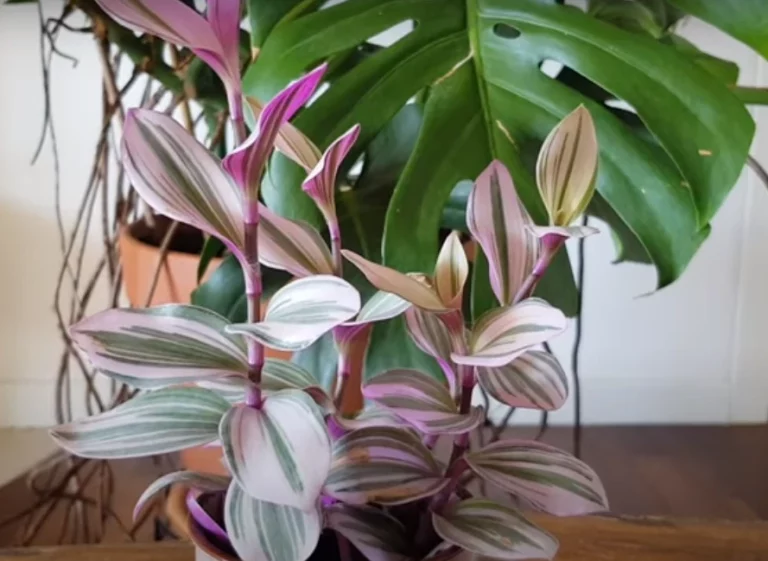
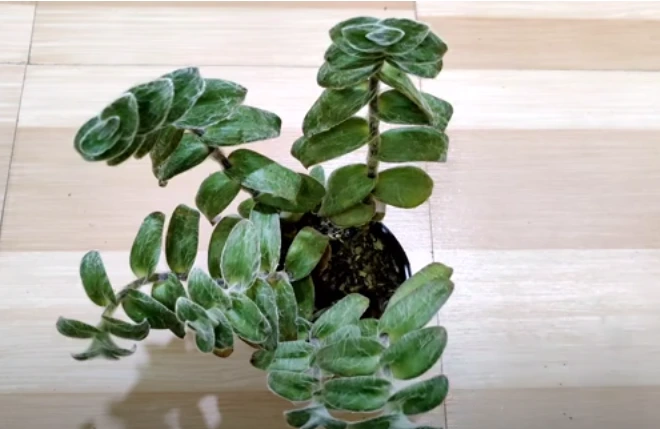
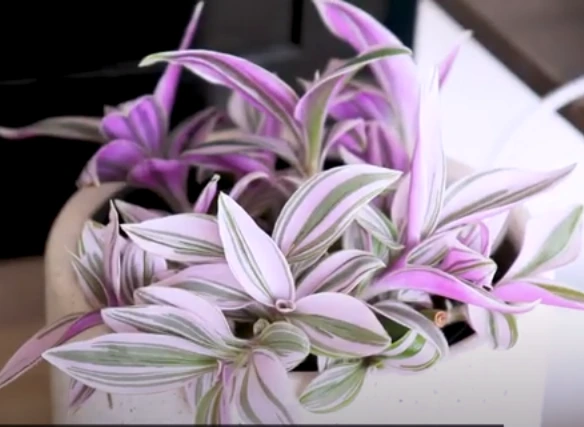

One Comment